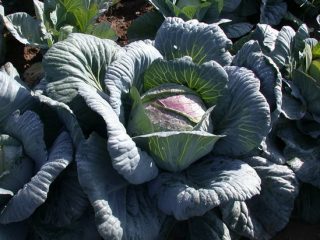Content
If the cauliflower is bitter, the dish may become unsuitable for consumption. In most recipes, this ingredient is the main ingredient, and if it is not of the proper quality, the food will end up with an unpleasant aftertaste. To avoid this, the product must be processed in a special way.
Why is cauliflower bitter?
The vegetable is universal in use: it can be made into a puree, used for boiling or frying, or added to soups. But sometimes cauliflower tastes bitter to one degree or another. Housewives blame varietal characteristics for this, but they are partly right.
This is primarily due to the fact that she is genetically predisposed to this. Bitterness can be present in both cabbage and Brussels sprouts. But an unpleasant taste is not only a genetic trait, but also the result of improper care.
Violation of the principles of agricultural technology leading to the appearance of bitterness in cauliflower:
- Excessive and too frequent fertilization of vegetables with mineral fertilizers rich in nitrogen.
- Insufficient watering of the plant.
- Regular use of nitrates in the fight against harmful insects and diseases.
- Lack of potassium and phosphorus in the soil during the period of fork formation.
- Close planting of hot peppers next to a bed of cauliflower.
- Harvesting too early or late.
Dry, hot summers also have a negative effect on the taste of the vegetable. Cauliflower grows worse in the southern regions; the plant is constantly exposed to scorching rays and receives little moisture. They recommend cultivating the vegetable in greenhouse conditions.
When purchasing cauliflower, you should choose medium-sized fruits. A good indicator of quality are dense and whole inflorescences of uniform color.

The weight of a head of cabbage can vary from 500 to 1500 g depending on the variety
How to remove bitterness from cauliflower
The choice of method depends on the final purpose of preparation and the means at hand. If you need to bake a vegetable, you can use freezing; if you plan on soup or stew, then it is recommended to give preference to soaking or boiling.
Boil
The most common method is to immerse the bitter cauliflower in boiling water. First you need to take it apart and wash it well. As soon as the water boils, you need to add the cauliflower with bitterness to the pan, and then leave it for 5-10 seconds. After the time has passed, drain the liquid, then refill the pan and put on fire. As soon as the water boils, cook the vegetable for ten minutes and then use it for further purposes.

During cooking, you can add a couple of drops of lemon juice to the pan; it will also neutralize the bitterness.
Soak before cooking
Clean the vegetable from dirt and separate it into inflorescences. Pour cold water, slightly acidified with lemon, over the bitter cauliflower. The product should be soaked for half an hour. Then drain the liquid and rinse the fork parts.
Boil in water with milk
Vegetables with bitterness must be cleared of leaves and debris. Then disassemble into inflorescences. Pour milk and water in equal proportions into the pan. Place cauliflower florets with bitterness in boiling liquid for 5-10 minutes. After the time has passed, drain them in a colander.

Some housewives add salt and herbs to milk to give the vegetable a pleasant taste and aroma.
Most housewives use this method when they plan to bake cabbage in the future. To do this, dip it in egg-sour cream filling and sprinkle cheese on top.
Put it in the freezer
The least labor-intensive method is to freeze the product. Separate the cabbage into florets and rinse. Leave them to dry on a towel. Place the vegetable on a cutting board and place in the freezer. Once it is frozen, it can be poured into an airtight container so that it does not absorb foreign odors.
You can use the finished product in various ways: leave it to melt and then make a puree soup, bake it with meat in the oven, boil it and serve as a side dish.
The disadvantage of this method is the need to wait: the workpiece cannot be used immediately. But you can freeze cabbage for the winter, as it will not only lose its bitterness, but also retain all its beneficial substances. And in order to get all the vitamins as much as possible, it is recommended not to defrost it, but to immediately heat treat it.

The best option for storing frozen cauliflower is vacuum bags or zip-lock packaging.
Conclusion
Cauliflower tastes bitter for various reasons, but you can neutralize the unpleasant taste at home.Boiling, soaking or freezing are all methods available to housewives, which have both advantages and disadvantages. The choice of method for getting rid of bitterness depends on personal preference.








